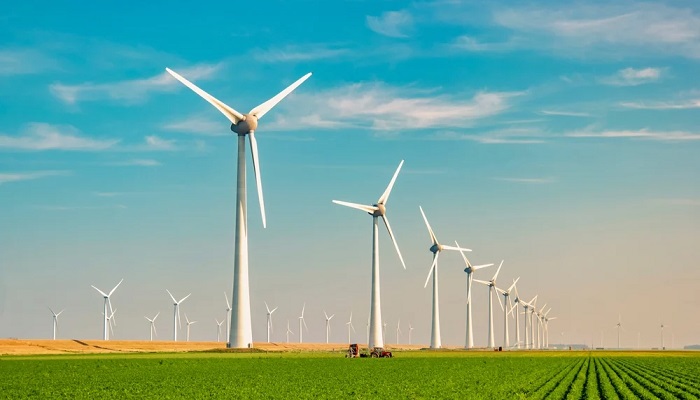2023 happened to be the best year on record when it came to new wind energy installations.
The world went on to install 116 gigawatts of new wind power capacity in 2023, as per the latest Global Wind Report coming from the industry trade association, the Global Wind Energy Council- GWEC. That happens to be a 50% surge from 2022, thereby making it the best year on record when it comes to new wind projects.
China happened to lead both in case of offshore and onshore wind installations, which were followed by the US, Brazil, and Germany. Thanks to the robust progress in the Netherlands, Europe also happened to have a record year in 2023 with 3.8 gigawatts of new offshore wind capacity.
While wind power growth happens to be highly concentrated in a few major countries, certain other regions as well as nations saw record growth. Africa as well as the Middle East installed almost 1 gigawatt of wind power capacity in 2023, which is nearly triple that of 2022.
All these developments point out the fact that the world is indeed moving in the right direction when it comes to combating climate change. However, that yearly growth must be a minimum of 320 gigawatts by 2030 in order to meet the COP28 pledge as far as tripling renewable energy by the end of the decade is concerned.
According to Ben Backwell, the GWEC CEO, it is great to see wind industry growth picking up, and they happen to be indeed proud of reaching a new annual record, but the point here is that much more needs to be done so as to unlock growth.
Which countries happen to be powered entirely by renewables?
It is well to be noted that seven countries happen to generate all of their energy from renewable sources, as per the figures coming from the International Energy Agency- IEA and the International Renewable Energy Agency- IRENA.
Above 99.7% of electricity in countries such as Albania, Bhutan, Iceland, Ethiopia, Nepal, Paraguay, and the Democratic Republic of Congo happens to come from geothermal, hydro, solar or even wind power.
Apparently, Norway came close with 98.38% of its energy coming from wind, water, or solar, as per the data compiled by Professor Mark Jacobson from Stanford University.
More 40 countries, as a matter of fact, got at least half of their electricity from renewable sources in 2021 and 2022, including 11 in Europe. There were others, such as Germany or Portugal, which are indeed capable of running on 100% wind, water as solar, but for short amounts of time.
Solar can as well overtake other renewables
Although many of the countries listed above happen to be currently using large amounts of hydropower or wind energy, experts go on to predict that solar could take over as a prominent source in the near future. Technology has gone on to improve, and costs are heavily dropping.
Solar went on to dominate the expansion when it comes to renewable energy capacity in 2023, comprising 73% of all growth, which was followed by wind power at 24%. It now happens to make up 37% of the world’s overall renewable energy capacity.
It is well to be noted that a 2023 study from the University of Exeter as well as University College London goes on to forecast that solar is going to touch an irreversible tipping point, thereby becoming the world’s most prominent source of energy by 2050.






































